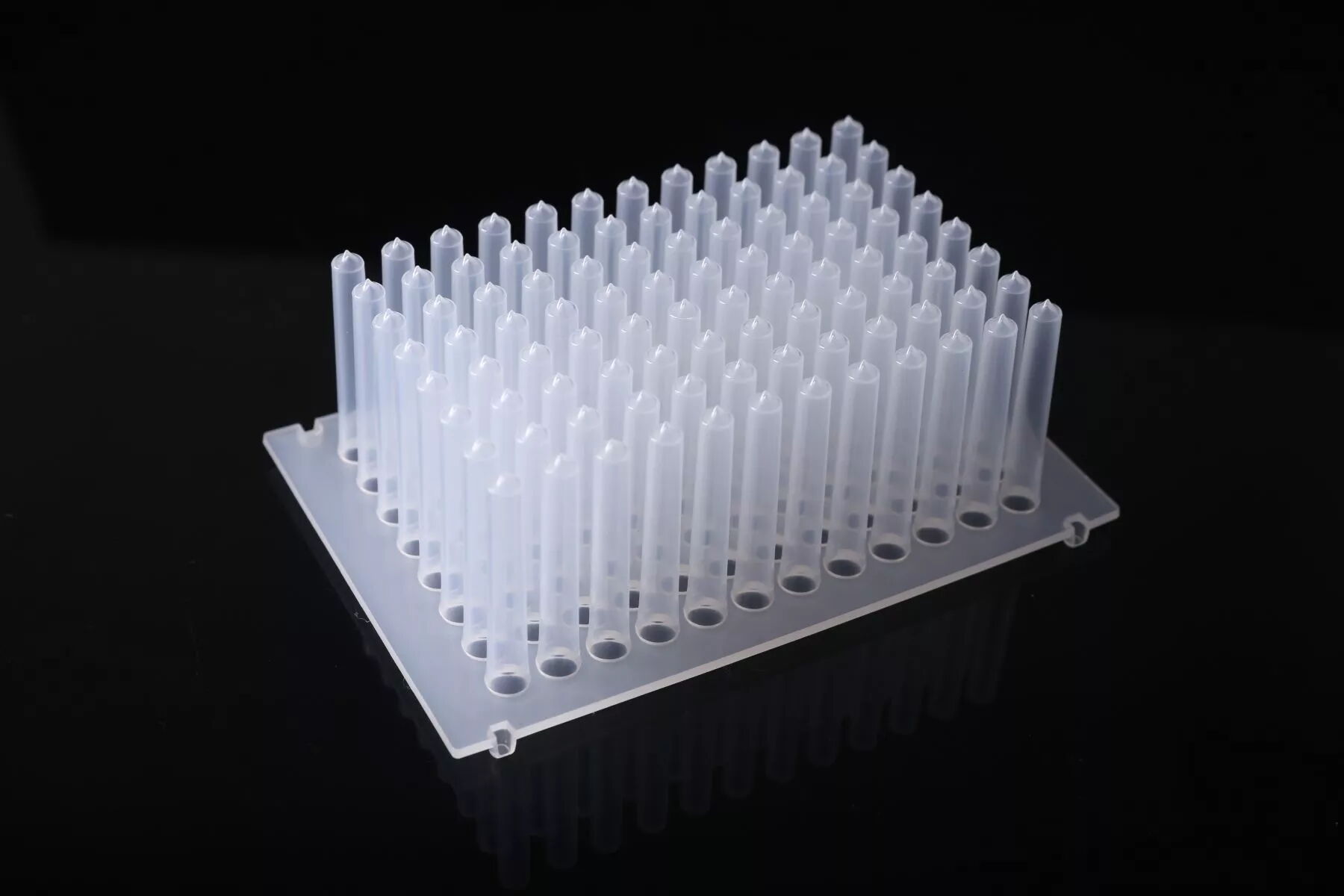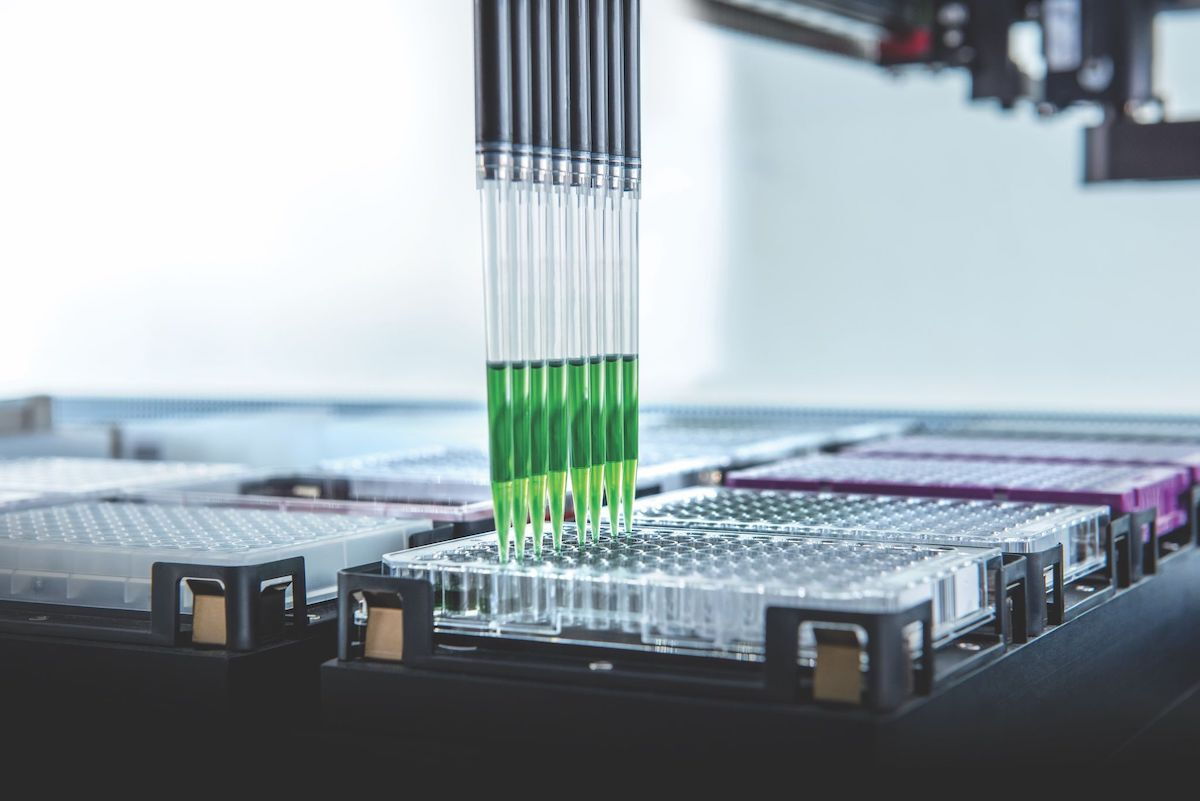Single-Channel Pipettes and Multi-Channel Pipettes
Mar 19, 2024
The single-channel pipette enables users to transfer individual aliquots accurately, one at a time. It is commonly employed in laboratories with a low sample throughput, typically those engaged in research and development.
Featuring a single head for precise aspiration and dispensing of liquid through a disposable tip, the single-channel pipette finds utility across various applications within laboratories with limited throughput. Such settings often include research endeavors in analytical chemistry, cell culture, genetics, and immunology.
Multi-channel pipettes operate similarly to single-channel pipettes but employ multiple tips to simultaneously measure and dispense uniform volumes of liquid. They are commonly available in configurations such as 8 or 12 channels, although sets with 4, 6, 16, and 48 channels are also accessible. Additionally, benchtop versions with 96 channels are available for purchase.
Utilizing a multi-channel pipette facilitates the swift filling of microtiter plates containing 96-, 384-, or 1,536-wells. These plates may house samples for various applications including DNA amplification, ELISA (diagnostic testing), kinetic studies, and molecular screening.
Comparison: Single-Channel vs. Multi-Channel Pipettes
Efficiency
The single-channel pipette excels in experimental work, particularly when dealing with individual tubes or conducting single cross-matches in blood transfusions.
However, its efficiency diminishes as sample throughput increases. For tasks involving multiple samples/reagents or larger assays conducted in 96-well microtiter plates, employing a single-channel pipette becomes inefficient. Utilizing a multi-channel pipette significantly reduces the number of pipetting steps required.
The following table illustrates the pipetting steps needed for single-channel, 8-channel, and 12-channel setups when transferring 6 reagents to a 96-well microtiter plate:
Number of Pipetting Steps Required (6 Reagents x 96-Well Microtiter Plate)
Single-Channel Pipette: 576
8-Channel Pipette: 72
12-Channel Pipette: 48
Volume of Pipetting
One notable distinction between single and multi-channel pipettes is the volume transfer capability per well. While this varies depending on the specific model, generally, multi-channel pipettes cannot transfer as much volume per head compared to single-channel pipettes.
Single-channel pipettes typically offer a volume transfer range spanning from 0.1 µl to 10,000 µl, whereas multi-channel pipettes typically range from 0.2 µl to 1200 µl.
Sample Loading
Historically, multi-channel pipettes have been criticized for being cumbersome and challenging to use, leading to inconsistent sample loading and difficulties in tip loading. However, newer models have addressed these issues, offering improved user-friendliness and mitigating previous challenges.
It's important to note that while liquid loading may exhibit slightly more variability with multi-channel pipettes, they generally tend to be more accurate overall than single-channel pipettes. This is primarily because single-channel pipettes are more susceptible to inaccuracies stemming from user fatigue-induced errors (refer to the next paragraph).
Reducing Human Error
Minimizing the number of pipetting steps significantly reduces the likelihood of human error. Eliminating variability stemming from fatigue and boredom leads to more reliable and reproducible data and results.
Calibration
Regular calibration is essential to ensure the accuracy and precision of liquid handling devices. As per standard ISO8655, each channel must undergo testing and reporting. However, the calibration process becomes more time-consuming with pipettes having a higher number of channels.
For instance, based on information from pipettecalibration.net, standard calibration of a 12-channel pipette requires 48 pipetting cycles and gravimetric weighings (2 volumes x 2 repetitions x 12 channels). Depending on the operator's speed, this process can take over 1.5 hours per pipette. Laboratories in the United Kingdom requiring UKAS calibration would need to conduct a total of 360 gravimetric weighings (3 volumes x 10 repetitions x 12 channels). Performing such a large number of tests manually becomes impractical and may outweigh the time savings achieved by using a multi-channel pipette in some laboratories.
Repair
While purchasing a new pipette, it's often overlooked that the manifold of certain multi-channel pipettes may not be repairable. This implies that if one channel is damaged, the entire manifold might need replacement. However, some manufacturers offer individual channel replacements. Therefore, it's advisable to confirm repairability with the manufacturer before buying a multi-channel pipette.
In conclusion, the multi-channel pipette stands as an indispensable tool for laboratories with anything more than minimal sample throughput. In nearly every scenario, the maximum volume of liquid needed for transfer falls within the capacity of each tip on a multi-channel pipette, with few associated drawbacks. Any slight increase in complexity in using a multi-channel pipette is vastly outweighed by the significant decrease in workload resulting from a reduced number of pipetting steps. This leads to enhanced user comfort and diminished user error.
Featuring a single head for precise aspiration and dispensing of liquid through a disposable tip, the single-channel pipette finds utility across various applications within laboratories with limited throughput. Such settings often include research endeavors in analytical chemistry, cell culture, genetics, and immunology.
Multi-channel pipettes operate similarly to single-channel pipettes but employ multiple tips to simultaneously measure and dispense uniform volumes of liquid. They are commonly available in configurations such as 8 or 12 channels, although sets with 4, 6, 16, and 48 channels are also accessible. Additionally, benchtop versions with 96 channels are available for purchase.
Utilizing a multi-channel pipette facilitates the swift filling of microtiter plates containing 96-, 384-, or 1,536-wells. These plates may house samples for various applications including DNA amplification, ELISA (diagnostic testing), kinetic studies, and molecular screening.
Comparison: Single-Channel vs. Multi-Channel Pipettes
Efficiency
The single-channel pipette excels in experimental work, particularly when dealing with individual tubes or conducting single cross-matches in blood transfusions.
However, its efficiency diminishes as sample throughput increases. For tasks involving multiple samples/reagents or larger assays conducted in 96-well microtiter plates, employing a single-channel pipette becomes inefficient. Utilizing a multi-channel pipette significantly reduces the number of pipetting steps required.
The following table illustrates the pipetting steps needed for single-channel, 8-channel, and 12-channel setups when transferring 6 reagents to a 96-well microtiter plate:
Number of Pipetting Steps Required (6 Reagents x 96-Well Microtiter Plate)
Single-Channel Pipette: 576
8-Channel Pipette: 72
12-Channel Pipette: 48
Volume of Pipetting
One notable distinction between single and multi-channel pipettes is the volume transfer capability per well. While this varies depending on the specific model, generally, multi-channel pipettes cannot transfer as much volume per head compared to single-channel pipettes.
Single-channel pipettes typically offer a volume transfer range spanning from 0.1 µl to 10,000 µl, whereas multi-channel pipettes typically range from 0.2 µl to 1200 µl.
Sample Loading
Historically, multi-channel pipettes have been criticized for being cumbersome and challenging to use, leading to inconsistent sample loading and difficulties in tip loading. However, newer models have addressed these issues, offering improved user-friendliness and mitigating previous challenges.
It's important to note that while liquid loading may exhibit slightly more variability with multi-channel pipettes, they generally tend to be more accurate overall than single-channel pipettes. This is primarily because single-channel pipettes are more susceptible to inaccuracies stemming from user fatigue-induced errors (refer to the next paragraph).
Reducing Human Error
Minimizing the number of pipetting steps significantly reduces the likelihood of human error. Eliminating variability stemming from fatigue and boredom leads to more reliable and reproducible data and results.
Calibration
Regular calibration is essential to ensure the accuracy and precision of liquid handling devices. As per standard ISO8655, each channel must undergo testing and reporting. However, the calibration process becomes more time-consuming with pipettes having a higher number of channels.
For instance, based on information from pipettecalibration.net, standard calibration of a 12-channel pipette requires 48 pipetting cycles and gravimetric weighings (2 volumes x 2 repetitions x 12 channels). Depending on the operator's speed, this process can take over 1.5 hours per pipette. Laboratories in the United Kingdom requiring UKAS calibration would need to conduct a total of 360 gravimetric weighings (3 volumes x 10 repetitions x 12 channels). Performing such a large number of tests manually becomes impractical and may outweigh the time savings achieved by using a multi-channel pipette in some laboratories.
Repair
While purchasing a new pipette, it's often overlooked that the manifold of certain multi-channel pipettes may not be repairable. This implies that if one channel is damaged, the entire manifold might need replacement. However, some manufacturers offer individual channel replacements. Therefore, it's advisable to confirm repairability with the manufacturer before buying a multi-channel pipette.
In conclusion, the multi-channel pipette stands as an indispensable tool for laboratories with anything more than minimal sample throughput. In nearly every scenario, the maximum volume of liquid needed for transfer falls within the capacity of each tip on a multi-channel pipette, with few associated drawbacks. Any slight increase in complexity in using a multi-channel pipette is vastly outweighed by the significant decrease in workload resulting from a reduced number of pipetting steps. This leads to enhanced user comfort and diminished user error.
Previous: How to Accurately Obtain Experimental Results in PCR
Next: The Research Directions of PCR Laboratories



